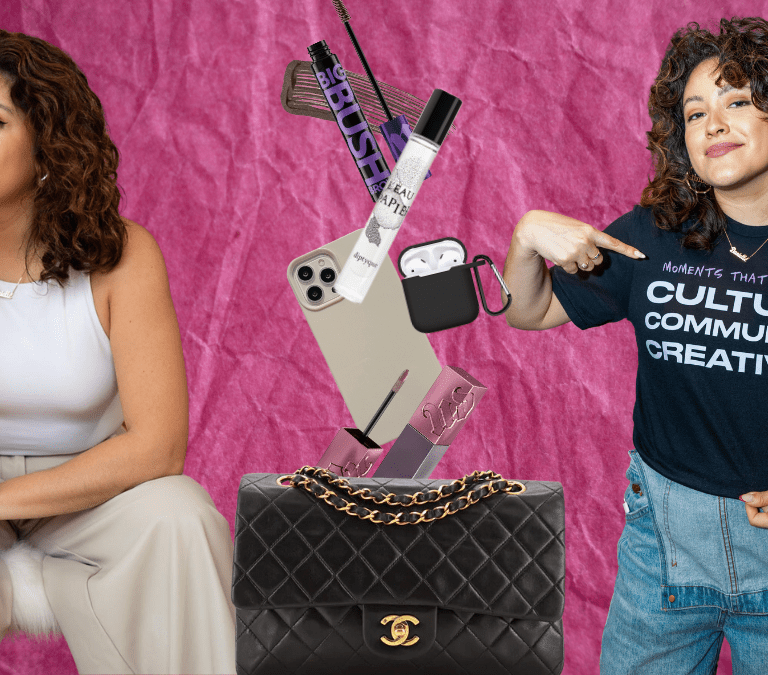
Protective styles like box braids, cornrows, and spring and Havana twists have come in clutch for keeping our tresses fresh and fierce. These lewks also help us travel without fuss and minimize our daily styling in our jam-packed schedules. Yet, far too many of us have taken for granted that these protective styles are also meant to protect our hair. It almost seems like it’s “out of sight, out of mind” and that can lead to dry, brittle, and breaking hair.
So, before you get your next ‘do done (or if you’re rocking one now), here’s a quick reminder that our tresses require consistent love and attention to grow and maintain length. Read through for some quick tips to help ensure you’re keeping your hair healthy and flourishing in and in between your protective styles.
Minimize Stress
Yes, we want ‘dos that last, but avoid getting styles that are too tight or too heavy for your hair and scalp. This means clearly communicating with your braider or hairstylist if your install is too tight or pulling on your edges while they are doing it. Don’t wait until the hairstyle is finished. Beauty does not have to mean pain. Also, be mindful of the amount of hair being added to each parted section of hair, especially if you have fine, thin hair.
Keep It Moisturized…
Your hair and scalp require moisture, especially when tucked away. Synthetic extensions can actually dry out your hair and cause damage to the cuticle as it rubs against your extensions. Avoid breakage by keeping your tresses hydrated with daily moisturizing sprays that have water as the primary ingredient. You can even do a weekly steam treatment with most installs.
…But Not Wet
Say yes to hydration, but avoid overdoing it. Too much moisture can create a damp environment that is prime for bacterial and fungal growth that can leave your hair smelly, and worse, cause serious follicle damage and hair loss. Also, make sure to allow your hair and scalp to fully dry after working out, swimming, and, of course, washing your hair. Grab your favorite hand-held or hooded dryer and dry your hair on low to medium heat.
Keep Your Scalp Clean
I know, I know, you don’t want to mess up your fresh ‘do by washing it too much, but keeping your scalp and hair clean is essential to healthy hair. Try low-manipulation techniques like sectioning braids and twists into four parts, spray water to dampen and then apply shampoo directly to the scalp and massage gently. Rinse out in sections. If you’ve got heavy scalp build-up, apply SeaBreeze to a cotton ball, gently rub through parted sections, and rinse before washing. For heavy build-up on your install, especially if you’ve overloaded it with grease, try an apple cider vinegar rinse.
Know When To Take It Out
Yes, protective styles are meant to protect for long periods of time, but there is such thing as too long. While six to eight weeks has been the general rule of thumb, how long you keep your install in really does depend on your hair type, condition, and hairstyle.
If you’ve got fine, thin hair, you shouldn’t leave in braids that are hanging with more than an inch of new growth to avoid stress (and breakage). Thicker, coiler hair can actually stay in longer provided the hair is being properly maintained while installed.
Slow Down On Your Takedown
In addition to hair hydration, this might be the most important part of the protective style process. Take. Your. Time. Taking your install out is a marathon, not a race. Make sure it’s properly moisturized before beginning the takedown process and be gentle. Don’t rush to pull braids or twists out, it will only make the detangling part more stressful and damaging.
Finger Detangle Those Root Clumps With A Conditioner
Did you know we shed about 100 strands of hair a day? Well, all of those strands have been hanging on to the root of your install, forming little clumps mixed with build-up. Don’t just comb through them! Take your time with a bit of conditioner and finger detangle your hair to avoid pulling and breaking tresses. Remember, the key to longer hair is retention.
Deep Condition
Give your hair some needed TLC with a deep conditioner or hair mask after takedown to help nourish, hydrate and seal in moisture after your normal wash and conditioner routine. To better seal the moisture, add heat or steam to your conditioning process.
Let Your Hair And Scalp Breathe
I know, I know. You’re ready to get the next look. But, we need to give our tresses a break between protective styles. Cuticle friction from long-term use of extensions can actually cause damage to the hair shaft, including cuticle lifting and breakage. So give your hair some breathing time to recover and revitalize. It’s also a good way to ensure that you have a better relationship with your own tresses and don’t become dependent on just covering it up.



